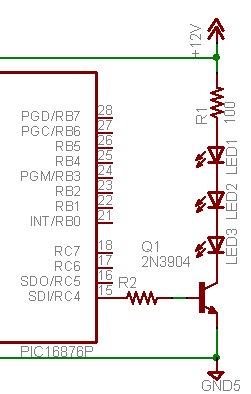When building projects using a microcontroller there will come a time when you need to drive a load that exceeds the raw current capability of the device. Eric Wolf wrote a BJT Transistor article that will demonstrate how this can be done.
“As you may or may not already know, typical TTL logic outputs on microcontrollers run in the range of 4.5 – 5.5 volts. Some microcontrollers, such as the microcontroller devices manufactured by Texas Instruments, use voltages as low as 3.3 volts. In regard to current capability, generally speaking, most microcontrollers will only source around 20 mA or less (usually less) of current before you start running into problems. This is less than the amount of current used to power a super bright LED at maximum intensity (the ones I use run around 30 mA, a lot can run less). There comes a time in every man and woman’s life when they just need more power.”
Control Large Loads with the TTL Output of a Microcontroller


Permalink
Thats a perfect article about principles of electrical engineering. The Main point is that it is written very easy to understand, first of all for people who doesn’t have a technical apprenticeship. Good work!
Permalink
We used that simple cirquit (but omitted R1 and increades R2) to drive a superflux-LED at 30 mA using a PWM… the oszilloscope came up with a discharge-curve for the current flowing through the LED on the falling edge of the µC. No charging curve could be seen.
Tests showed that a Capacitator around 10µF produced a comparable discharging curve, but the LED-cirquit can’t have more than a few pF.
Does anyone have an idea how to avoid this? More infos on demand if needed.